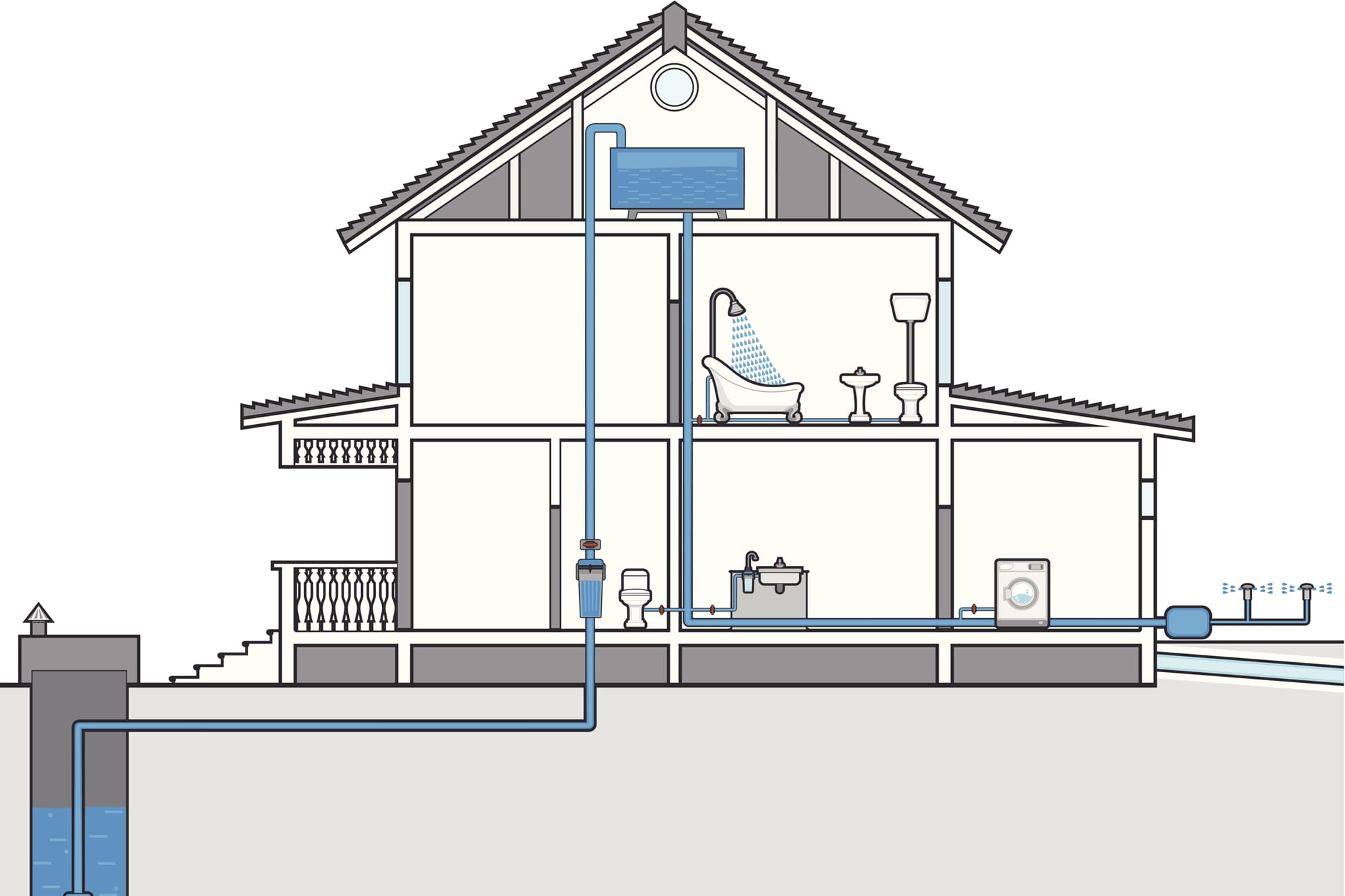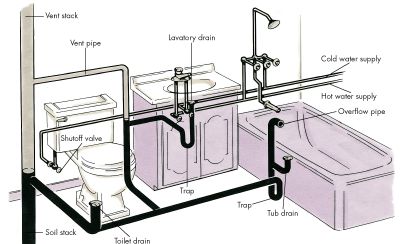The Basics of Your House's Plumbing System Anatomy
The Basics of Your House's Plumbing System Anatomy
Blog Article
This great article on the next paragraphs involving Exploring Your Homes Plumbing Anatomy is totally enlightening. Don't overlook it.

Understanding exactly how your home's pipes system functions is crucial for every single homeowner. From supplying tidy water for drinking, cooking, and bathing to safely eliminating wastewater, a properly maintained pipes system is critical for your household's health and wellness and convenience. In this thorough guide, we'll check out the detailed network that makes up your home's pipes and deal suggestions on maintenance, upgrades, and handling usual issues.
Intro
Your home's plumbing system is more than simply a network of pipes; it's a complex system that guarantees you have access to tidy water and effective wastewater elimination. Understanding its components and how they interact can help you protect against costly repair services and ensure every little thing runs efficiently.
Fundamental Components of a Plumbing System
Pipelines and Tubes
At the heart of your plumbing system are the pipes and tubes that bring water throughout your home. These can be constructed from different products such as copper, PVC, or PEX, each with its benefits in regards to durability and cost-effectiveness.
Fixtures: Sinks, Toilets, Showers, and so on.
Components like sinks, commodes, showers, and bath tubs are where water is used in your house. Recognizing how these components attach to the plumbing system aids in diagnosing problems and intending upgrades.
Valves and Shut-off Factors
Shutoffs control the flow of water in your pipes system. Shut-off valves are important during emergencies or when you require to make repairs, enabling you to separate parts of the system without interfering with water flow to the entire house.
Water System System
Main Water Line
The primary water line links your home to the local water supply or a private well. It's where water enters your home and is distributed to numerous components.
Water Meter and Stress Regulator
The water meter actions your water usage, while a pressure regulatory authority ensures that water flows at a secure stress throughout your home's pipes system, stopping damages to pipes and fixtures.
Cold Water vs. Warm water Lines
Comprehending the distinction between cold water lines, which supply water directly from the main, and hot water lines, which bring heated water from the water heater, helps in troubleshooting and preparing for upgrades.
Drainage System
Drain Pipeline and Traps
Drain pipes carry wastewater away from sinks, showers, and commodes to the sewage system or septic system. Catches stop sewer gases from entering your home and additionally catch debris that could create obstructions.
Air flow Pipelines
Air flow pipelines permit air right into the drain system, preventing suction that could reduce water drainage and trigger traps to empty. Proper air flow is crucial for preserving the stability of your plumbing system.
Importance of Appropriate Water Drainage
Making certain appropriate drain prevents backups and water damage. Regularly cleaning up drains and maintaining catches can protect against costly repair services and expand the life of your pipes system.
Water Furnace
Sorts Of Hot Water Heater
Water heaters can be tankless or conventional tank-style. Tankless heating units heat water on demand, while containers save heated water for prompt usage.
Updating Your Pipes System
Reasons for Upgrading
Upgrading to water-efficient components or changing old pipes can improve water top quality, reduce water costs, and enhance the worth of your home.
Modern Plumbing Technologies and Their Benefits
Discover innovations like smart leakage detectors, water-saving toilets, and energy-efficient hot water heater that can save cash and decrease ecological influence.
Cost Factors To Consider and ROI
Compute the ahead of time costs versus long-lasting financial savings when considering plumbing upgrades. Lots of upgrades pay for themselves with lowered utility expenses and less repairs.
Exactly How Water Heaters Link to the Pipes System
Recognizing just how hot water heater connect to both the cold water supply and hot water distribution lines helps in diagnosing issues like not enough warm water or leaks.
Maintenance Tips for Water Heaters
Consistently flushing your water heater to eliminate debris, examining the temperature level setups, and evaluating for leaks can expand its life-span and improve energy effectiveness.
Typical Pipes Concerns
Leakages and Their Reasons
Leakages can take place due to aging pipes, loose fittings, or high water pressure. Dealing with leaks without delay protects against water damages and mold and mildew development.
Blockages and Blockages
Blockages in drains pipes and commodes are often caused by flushing non-flushable products or a build-up of oil and hair. Making use of drainpipe screens and being mindful of what goes down your drains can stop obstructions.
Indicators of Plumbing Problems to Watch For
Low tide stress, slow-moving drains pipes, foul odors, or abnormally high water expenses are indications of potential pipes troubles that need to be resolved promptly.
Pipes Upkeep Tips
Routine Evaluations and Checks
Schedule annual pipes examinations to capture problems early. Seek signs of leaks, deterioration, or mineral accumulation in faucets and showerheads.
DIY Upkeep Tasks
Straightforward tasks like cleaning faucet aerators, looking for toilet leakages making use of color tablet computers, or shielding revealed pipelines in chilly climates can avoid major pipes issues.
When to Call an Expert Plumbing Technician
Know when a pipes concern requires professional know-how. Trying intricate fixings without correct expertise can bring about even more damage and higher fixing expenses.
Tips for Lowering Water Usage
Easy practices like fixing leaks promptly, taking much shorter showers, and running complete loads of washing and meals can save water and reduced your energy costs.
Eco-Friendly Plumbing Options
Consider sustainable plumbing materials like bamboo for flooring, which is durable and green, or recycled glass for kitchen counters.
Emergency Preparedness
Steps to Take During a Pipes Emergency situation
Know where your shut-off shutoffs are located and exactly how to switch off the water in case of a ruptured pipeline or significant leak.
Significance of Having Emergency Situation Contacts Handy
Keep call info for regional plumbings or emergency situation solutions easily available for quick feedback during a pipes situation.
Environmental Impact and Conservation
Water-Saving Fixtures and Devices
Mounting low-flow faucets, showerheads, and toilets can significantly lower water use without compromising performance.
Do It Yourself Emergency Situation Fixes (When Appropriate).
Temporary repairs like using air duct tape to spot a leaking pipeline or putting a bucket under a trickling faucet can minimize damages up until a professional plumbing professional arrives.
Verdict.
Understanding the composition of your home's plumbing system equips you to maintain it successfully, saving money and time on repair services. By following routine upkeep routines and remaining informed concerning contemporary plumbing innovations, you can ensure your plumbing system operates successfully for years to find.
HOW YOUR PLUMBING SYSTEM WORKS
Which Pipes Do What?
Blue lines = fresh water supply entering the building Red lines = hot water supply entering the building Grey lines = pipes carrying waste away from the building and venting pipes carrying gases away from the building (through the roof) YOUR MAIN PLUMBING SYSTEMS
There are two main plumbing systems that support your home s basic plumbing needs one that brings clean water into your home, and one that sends dirty water away from your home. Connected to the toilet, bath, shower, and other faucets in your home, these two systems keep your water flowing in the right directions.
ACCESSING FRESH WATER
Fresh and clean water is brought into your home through the main water supply line . Filtered through one pipe, this water is pressured to flow into the various fixtures in your home at any given time.
This water can be sourced from a well located on your property, a pond or river (mostly cottages), or, as in most cases, from the city s municipal water treatment centre. However, it is important to note that water that is untreated, such as the water siphoned from ponds or rivers, may not be safe to drink. Personal water supplies always need to be treated for hardness and contaminants before consumed.
MUNICIPAL WATER SUPPLIES
Improve taste and odour Remove sediment Eliminate hardness Reduce chlorine COLD WATER SUPPLY VS. HOT WATER SUPPLY
Cold water flows into your home or building through the service line, which then distributes hot or cold water to your fixtures. This line is most commonly run through a central column that runs floor to floor. Hot water runs in short and straight pipes as the longer the pipeline, the more heat that will be lost in the transfer. Having shorter pipes also allows residents to access hot water more quickly.
WASTE WATER SYSTEM
Your wastewater system is divided into two parts pipes that send wastewater away from your home and venting pipes that send sewer gas away from your home. Sewage water travels through pipes that flush the water and waste towards local sewers that are operated and managed by your city or town. Most sewer systems rely on gravity to move the wastewater to where it needs to go.
The further away from your toilet or sink, the larger wastewater pipes become. This allows for waste to be disposed of from various parts of your home or business at once without pipe blockages. The angle and flow of these pipes are also essential for keeping your waste pipes clear of build up.
https://harrisplumbing.ca/how-your-home-plumbing-system-works/

I found that post about Plumbing Installation 101: All You Need to Know while doing research the internet. For those who enjoyed our post kindly consider to share it. We recognize the value of your readership.
Information Report this page